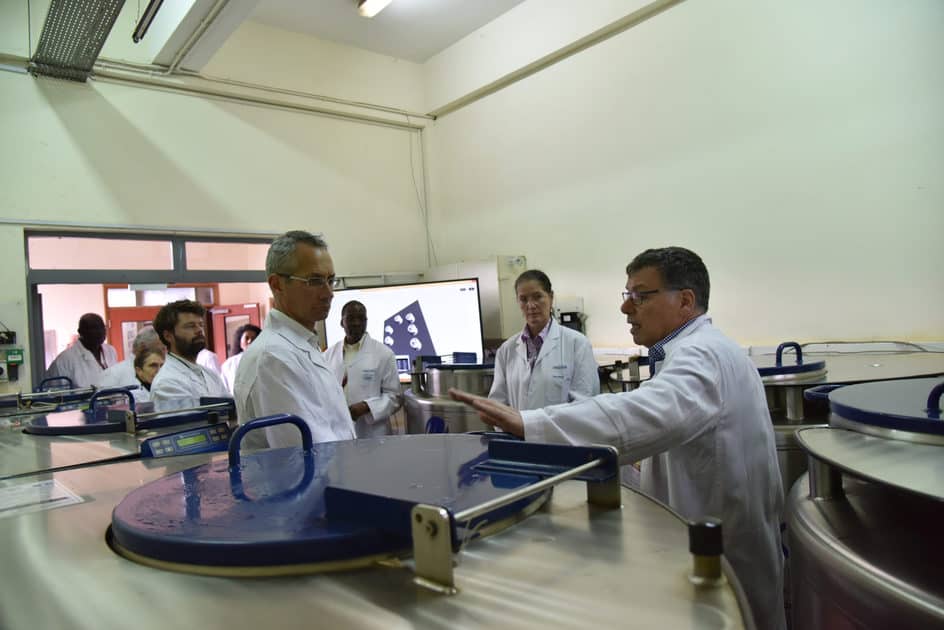ILRI’s ‘Azizi’ facility is storing samples of livestock and wildlife biodiversity for future research
- From
-
Published on
26.06.20
- Impact Area

Written by Ekta Patel & Paul Karaimu
Cylindrical liquid nitrogen sample storage tanks. Nairobi-based diplomatic missions visited the ILRI campus in Nairobi on 5 December 2019, visiting the Aziz Biorepository (photo credit: ILRI/Paul Karaimu).
The International Livestock Research Institute (ILRI) stores biological samples from a diversity of species, which provide an immense genetic library for research in zoonosis, genetics, reproductive technology and breed preservation.
In 2013, ILRI developed a facility known as ‘Azizi’, the Swahili word for treasure, for keeping in long-term storage the biological materials collected by the institute during the course of routine research activities. These materials include a wide range of samples such as blood, serum, DNA, RNA, tissue, and pathogens from insects, livestock and wildlife species in Africa. They are stored in cryogenic freezers under liquid nitrogen at the Azizi ‘biorepository’, which can hold up to half a million biological samples.
While Azizi is unlike the Svalbard Global Seed Vault, in that it does not store seeds which can be regrown, the repository could become the go-to place for genetic material for studying animal diversity and adaptation that contributes to global food security. Located at the ILRI campus in Nairobi, Kenya, this one-of-a-kind storage facility can be a treasure trove for researchers looking into understanding animal genetic diversity, animal disease evolution and resistance mechanisms of animal diseases. . . .
Related news
-

From Dirt to Decision-Making: Governance and Soil Health Must Go Hand in Hand
Multifunctional Landscapes Science Program26.11.25-
Biodiversity
-
Environmental health
-
Environmental health & biodiversity
In October, the world convened in Des Moines for the 2025 Borlaug Dialogue under the…
Read more -
-

CGIAR Multifunctional Landscapes at COP30: Advancing Adaptation and Nature-Based Solutions
Multifunctional Landscapes Science Program10.11.25-
Adaptation
-
Biodiversity
-
Environmental health
-
Environmental health & biodiversity
-
Mitigation
COP30 in Belém, Brazil is being heralded as a pivotal “COP of adaptation” and a…
Read more -
-

SOILutions for Security: CGIAR at the 2025 Borlaug Dialogue
Multifunctional Landscapes Science Program22.10.25-
Biodiversity
-
Environmental health
-
Environmental health & biodiversity
-
Food security
-
Nutrition
From October 21–23, CGIAR will join global partners in Des Moines, Iowa for the 2025…
Read more -
